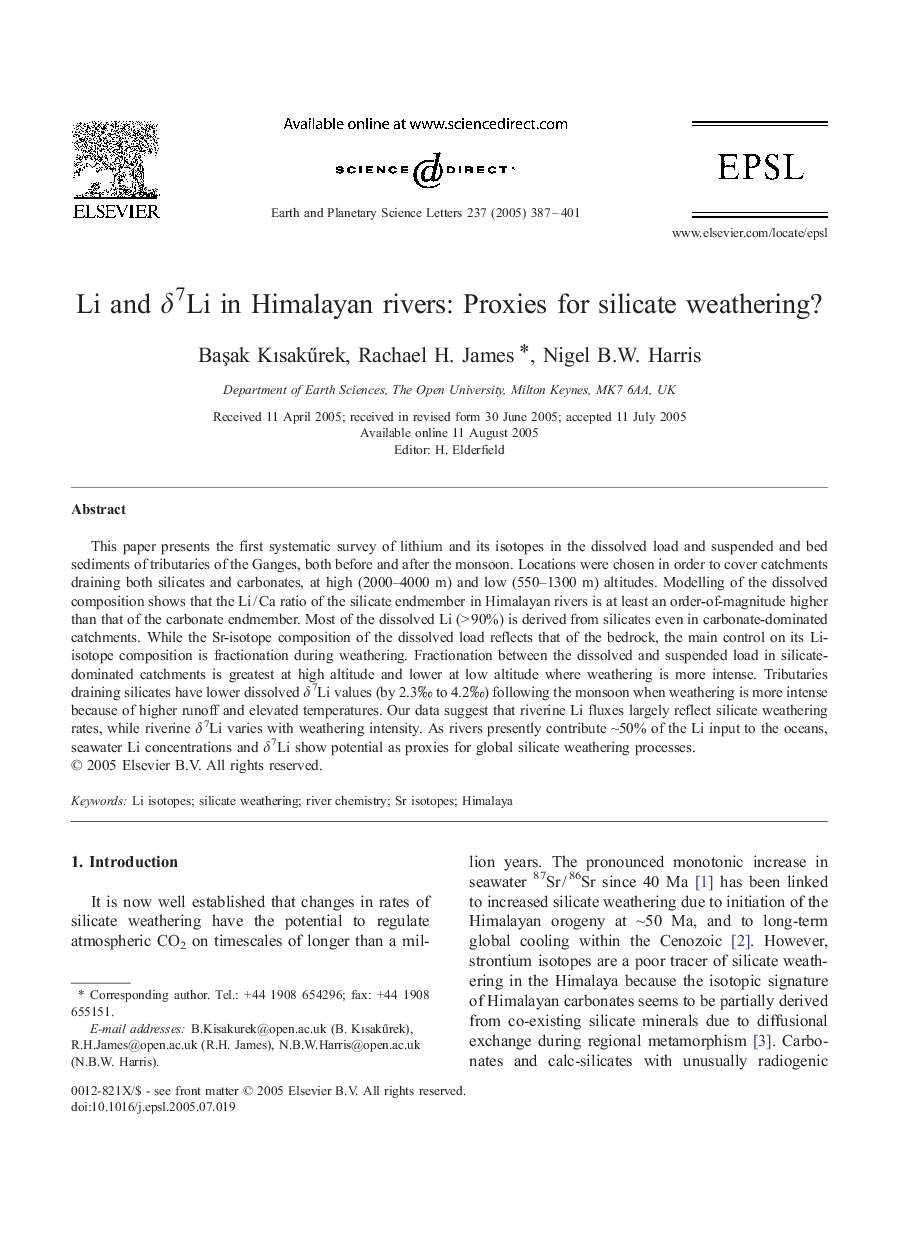| Article ID | Journal | Published Year | Pages | File Type |
|---|---|---|---|---|
| 9522043 | Earth and Planetary Science Letters | 2005 | 15 Pages |
Abstract
This paper presents the first systematic survey of lithium and its isotopes in the dissolved load and suspended and bed sediments of tributaries of the Ganges, both before and after the monsoon. Locations were chosen in order to cover catchments draining both silicates and carbonates, at high (2000-4000 m) and low (550-1300 m) altitudes. Modelling of the dissolved composition shows that the Li / Ca ratio of the silicate endmember in Himalayan rivers is at least an order-of-magnitude higher than that of the carbonate endmember. Most of the dissolved Li (> 90%) is derived from silicates even in carbonate-dominated catchments. While the Sr-isotope composition of the dissolved load reflects that of the bedrock, the main control on its Li-isotope composition is fractionation during weathering. Fractionation between the dissolved and suspended load in silicate-dominated catchments is greatest at high altitude and lower at low altitude where weathering is more intense. Tributaries draining silicates have lower dissolved δ7Li values (by 2.3â° to 4.2â°) following the monsoon when weathering is more intense because of higher runoff and elevated temperatures. Our data suggest that riverine Li fluxes largely reflect silicate weathering rates, while riverine δ7Li varies with weathering intensity. As rivers presently contribute â¼50% of the Li input to the oceans, seawater Li concentrations and δ7Li show potential as proxies for global silicate weathering processes.
Related Topics
Physical Sciences and Engineering
Earth and Planetary Sciences
Earth and Planetary Sciences (General)
Authors
BaÅak Kısakűrek, Rachael H. James, Nigel B.W. Harris,
